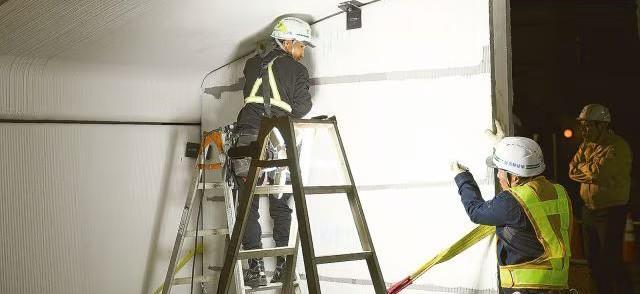
Japan Builds ‘World’s 1st’ 3-D Printed Train Station within 6 Hours
In a groundbreaking feat, a Japanese railway operator has unveiled a 3D-printed train station, claiming it to be the first such station in the world. The innovative project, which took less than six hours to complete, is a testament to the rapid advancements being made in the field of 3D printing technology.
Located in the city of Arida, the 3D-printed train station is a significant development in the world of infrastructure construction. According to reports, the components of the station were 3D-printed elsewhere and assembled at the site in record time. The station’s parts were printed at a factory and reinforced with concrete, making it a sturdy and durable structure.
The project was undertaken by JR Central, a Japanese railway operator, in collaboration with the construction company, Obayashi. The ambitious project aimed to demonstrate the potential of 3D printing technology in reducing construction time and costs. And, judging by the results, it appears that they have succeeded in doing just that.
So, how did they achieve this remarkable feat? The process began with the design of the train station, which was created using computer-aided design (CAD) software. The design was then sent to a 3D printer, which used a special type of concrete to print the station’s components. The printer, which was specifically designed for this project, was able to print the components at a rate of 10 square meters per hour.
Once the components were printed, they were transported to the construction site, where they were assembled. The assembly process was remarkably quick, with the entire station being completed in just six hours. The station’s parts were reinforced with concrete to provide additional strength and durability.
The new 3D-printed train station has sparked a lot of interest and excitement in the construction industry. It has the potential to revolutionize the way we build infrastructure, making it faster, cheaper, and more efficient. The technology could be used to build a wide range of structures, from small buildings to large-scale infrastructure projects.
The benefits of 3D printing technology in construction are numerous. For one, it can reduce construction time and costs. Traditional construction methods often involve labor-intensive processes, such as excavation and foundation work, which can take months or even years to complete. In contrast, 3D printing technology can print complex structures quickly and accurately, reducing the need for manual labor.
Another benefit of 3D printing technology is its ability to create complex shapes and structures that would be difficult or impossible to build using traditional methods. This is because 3D printing technology allows for the creation of complex geometries and structures that can be printed layer by layer.
Furthermore, 3D printing technology can also improve the sustainability of construction projects. Traditional construction methods often involve the use of large amounts of materials, such as steel and concrete, which can have a significant environmental impact. In contrast, 3D printing technology can use recycled materials and reduce waste, making it a more sustainable option.
The potential applications of 3D printing technology in construction are vast and varied. It could be used to build a wide range of structures, from small buildings to large-scale infrastructure projects. It could also be used to create complex shapes and structures that would be difficult or impossible to build using traditional methods.
In conclusion, the 3D-printed train station built by JR Central and Obayashi is a significant development in the world of infrastructure construction. It demonstrates the potential of 3D printing technology to reduce construction time and costs, improve sustainability, and create complex shapes and structures. As the technology continues to evolve, it is likely to play an increasingly important role in the construction industry.
Source:




